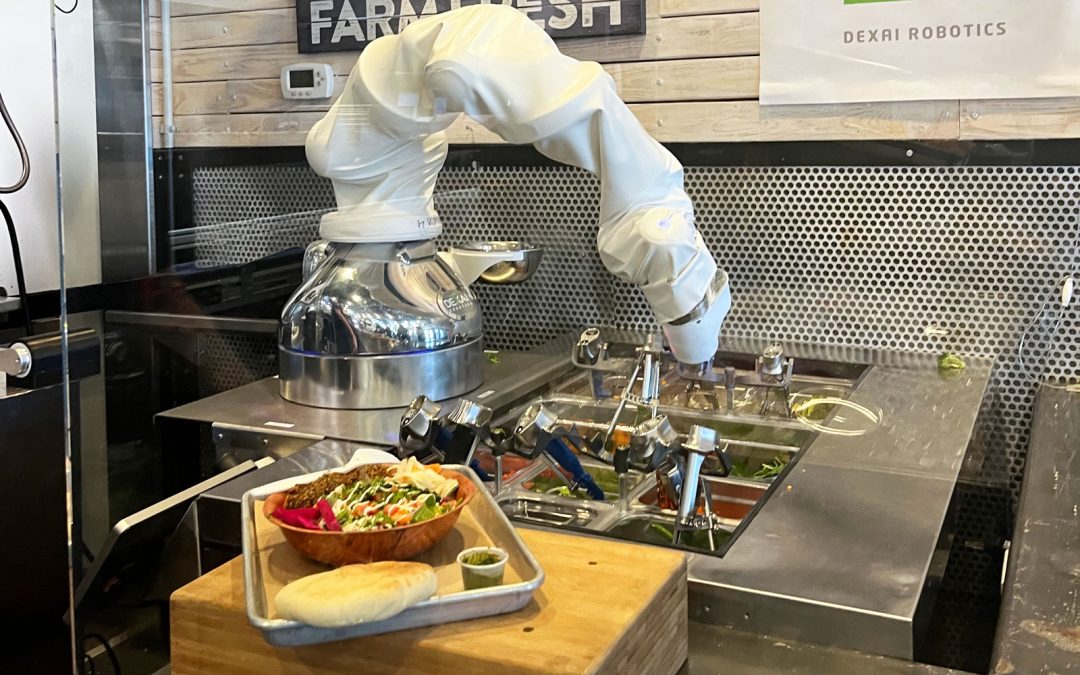A robotic food-assembly robot from Dexai is looking for some new kitchens with flexibility as a key focus.
Essentially, the robot dubbed Alfred is a food safe-certified robotic arm on a cart. It can sit in front of a row of hotel pans of ingredients, and uses traditional kitchen utensils like scoops and tongs. The first iteration available now is for food assembly, and it assembles dishes like salads and grain bowls.
Alfred is also joining the U.S. Armed Forces. Back in February, Dexai won a 10-location contract with the Defense Logistics Agency, the Department of Defense’s combat logistics support agency. Under the contract, Dexai will provide 10 robotic arms to the agency for use on military bases across the country.
Like everyone in foodservice thinking about automation, the agency was looking to robotics to help ease staffing shortages and wage inflation.
David Johnson, co-founder and CEO, said ease of use was a big factor.
“They were really looking for any help they could get, above and beyond they say they want a robot that is able to adapt to their menu and that it’s really easy to use. The technology can feel pretty challenging to folks. One of the things we’ve worked on is making it intuitive and straightforward,” said Johnson. “First and foremost, it has to adapt to what the chef puts in front of it. Being able to adapt to small changes like that is one of the things we really found is critical. The last thing you want is a robot that jams.”
He said chefs are able to update their own recipes and processes. While it’s early and there’s still intervention and help from the engineers to build out a menu today, Johnson said Dexai is working on a web-based portal for chefs to build the recipes themselves. Because Alfred uses standard kitchen tools, Johnson said it’s pretty easy to set up a new recipe.
“We think of recipes like the original computer science, it’s this order of instructions that people have been doing for thousands of years. We treat them in the exact way as a build book in the restaurant. The instructions to the restaurant are which order, how much and how are they arranged,” said Johnson.
The next phase will push flexibility further. Johnson said he envisions being able to move the robot around the kitchen to serve the need of the moment. In the morning, it might help with prep, during a rush it might be assembling whole entrees or plating what it can for a chef to top with protein. There’s also training the robot to work on different appliances, but that’s in the roadmap.
Today, there are four Alfred bots out assembling salads and bowls.
As for the cost, potential customers can either pay $50,000 for the robot or subscribe to one or multiple robots under a robotics-as-a-service model (RAAS). The price of the latter depends on the number of robots in service, Johnson added.
See a video of the robot assembling a salad below:


